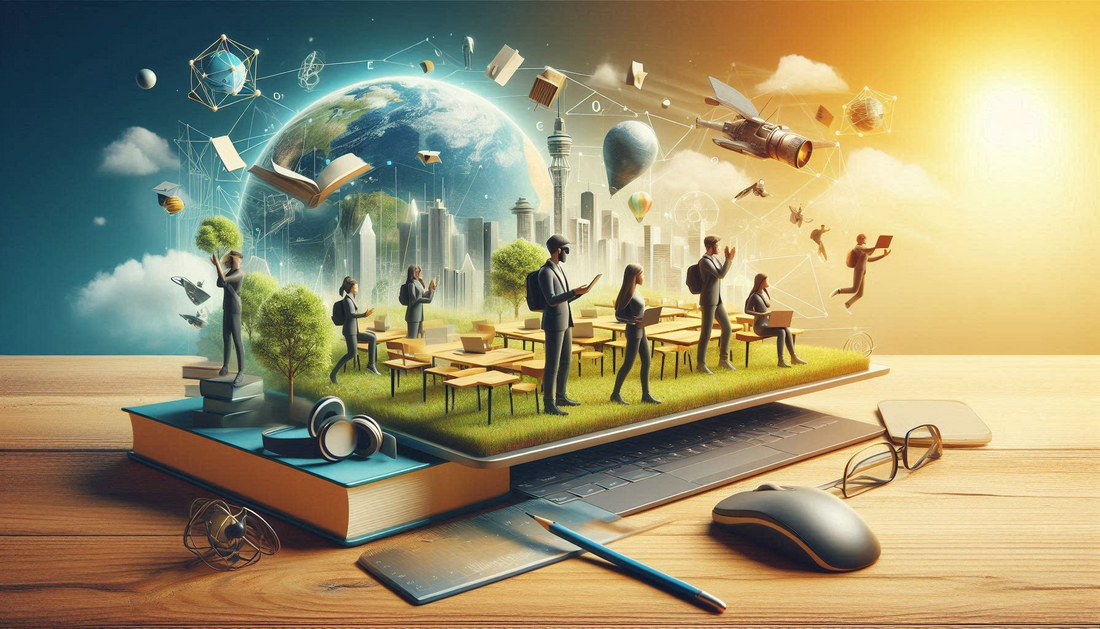
The Future of Learning: How AR is Changing Education
Share
Introduction
The education sector is on the verge of a significant transformation, and Augmented Reality (AR) is at the forefront of this revolution. AR is transforming the way we learn by making education more engaging, interactive, and effective. By leveraging AR technology, students can experience immersive and interactive learning experiences that enhance their engagement and understanding of complex concepts. Furthermore, AR education increases accessibility and personalization, making learning more inclusive and tailored to individual needs. As we explore the future of learning, it's clear that AR is poised to revolutionize the education sector in profound ways, making learning more enjoyable, effective, and accessible for all.
What is Augmented Reality?
Augmented Reality, or AR, is a technology that combines the real world with digital information. It adds virtual things like images, sounds, or feelings to the real world, making it more interactive and fun. Unlike Virtual Reality (VR), which creates a completely fake world, AR enhances the real world by adding digital elements to it. This is the foundation of AR development, which is changing the way we experience and interact with the world around us.
Benefits of AR in Education
- Fun Learning: AR makes learning enjoyable and interactive, keeping students engaged and motivated.
- Easy Understanding: AR helps students visualize complex ideas, making them simpler to grasp and remember.
- Learning Your Way: AR offers personalized learning experiences, tailored to each student's unique needs and style.
- Education for All: AR makes learning more accessible for students with disabilities and those in remote or underprivileged areas.
- Save Resources: AR reduces education costs by minimizing the need for textbooks and travel.
- Real-Life Connection: AR helps students apply theoretical concepts to real-world situations, making learning more practical and relevant.
Applications of AR in Education
- Living Textbooks: AR makes textbooks more exciting, turning complex ideas into interactive experiences.
- Safe Lab Experiments: AR lets students conduct lab experiments virtually, making learning safer and more affordable.
- 3D Exploration: AR helps students understand complex things better by letting them explore and interact with 3D models.
- Language Learning Games: AR makes learning languages more enjoyable with interactive conversations and games.
- Interactive Art: AR lets students create amazing 3D art and designs that come to life.
- Virtual Adventures: AR takes students on virtual field trips to explore historical sites, museums, and other interesting places.
AR makes learning more enjoyable, interactive, and effective!
Challenges and Limitations
- High Cost: AR technology and devices can be too expensive for schools to buy.
- Creating Good Content: Making good AR content takes a lot of time and resources.
- Teacher Support: Teachers need help learning how to use AR in their classes.
- Tech Problems: Technical issues like internet connectivity and device compatibility can cause trouble when using AR.
These challenges can make it hard for schools to use AR, but finding solutions can help make AR more accessible and useful for students.
Overcoming Challenges
- Too Expensive: AR devices and technology are costly for schools.
- Making Content is Hard: Creating good AR content takes a lot of time and effort.
- Teachers Need Help: Teachers need training to use AR effectively.
- Tech Troubles: Internet and device issues can stop AR from working properly.
These challenges make it tough for schools to use AR, but solving them can make AR more useful for students.
Future of Learning
AR is changing the way we learn, and it's getting better! Here's what's coming:
- More Schools Using AR: More schools and teachers will start using AR technology.
- Better Learning Content: AR content will get better, making learning more fun and effective.
- Learning Your Way: AR will help create personalized learning experiences, tailored to each student's needs.
- AR Meets AI: AR will combine with Artificial Intelligence to create even more amazing learning experiences.
- Learn from Anywhere: AR will make it possible to learn from anywhere, at any time, making education more accessible.
The future of learning is exciting, and AR is leading the way! Get ready for a new world of interactive, engaging, and effective learning
Conclusion
Augmented Reality (AR) is making learning more fun, interactive, and effective. Even though there are some challenges, the good things about AR in education are more important than the difficulties. As AR technology gets better, we can expect to see even more exciting and innovative ways to learn.